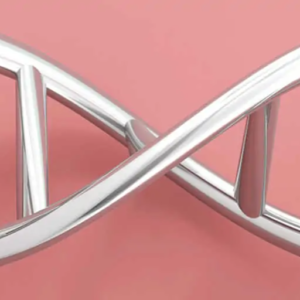The common molecular pathological denominator of primary aortic diseases (aortopathies) and connective tissue diseases with aortic involvement are congenital, genetically determined disorders of a) the extracellular matrix proteins, b) the TGF-beta signal transduction pathway or c) the structural proteins of the smooth vascular muscles. While disorders under a) and b) lead to a weakening of the connective tissue texture of the vascular adventitia, malfunctions under c) are associated with loss of contractile function. Both are associated with restricted windkessel function of the aorta and an increased risk of aneurysms or aneurysm ruptures in the arterial system. Serious, life-threatening complications range from ruptures of the ascending aorta to mesenteric artery rupture (e.g., during pregnancy).
Since determining the genetic cause of Marfan syndrome by identifying the fibrillin 1 gene (FBN1), numerous clinically definable differential diagnoses have been reported and genetically characterized. Connective tissue diseases with aortic involvement include Marfan syndrome, Loeys-Dietz syndrome, various subtypes of Ehlers-Danlos syndrome, various forms of cutis laxa and other syndromic and non-syndromic diseases. Aortic diseases are a prime example of genetic and phenotypic heterogeneity and are characterized by pleiotropy.
References
MacFarlane et al. 2017, Cold Spring Harb Perspect Biol 9 (11) / Meester et al. 2017, Ann Cardiothorac Surg 6:582
THORACIC AORTIC ANEURYSMS AND DISSECTIONS
Thoracic aortic aneurysms and dissections (TAAD) affecting the ascending aorta directly behind the aortic valve (type A dissection) or the descending aorta in the left subclavian artery distal to the aortic arch (type B dissection), may occur due to a genetically determined syndrome or in isolation. About 10-20% are inherited in an autosomal dominant manner with reduced penetrance and variable expression. TAAD are clinically and genetically heterogeneous.
Syndromic aortic diseases include:
- Marfan syndrome (MFS; FBN1 gene)
- Loeys-Dietz syndrome type 1 (LDS1; TGFBR1 gene)
- Loeys-Dietz syndrome type 2 (LDS2; TGFBR2 gene)
- Loeys-Dietz syndrome type 3 (LDS3; SMAD3 gene)
- Loeys-Dietz syndrome type 4 (LDS4; TGFB2 gene)
- Loeys-Dietz syndrome type 5 (LDS5; TGFB3 gene)
- Loeys-Dietz syndrome type 6 (LDS6; TGFB2 gene)
- Meester-Loeys syndrome (MRLS; BGN gene)
- Ehlers-Danlos syndrome, vascular type (vEDS;COL3A1 gene)
- Ehlers-Danlos syndrome with periventricular heterotopia (EDS, PVNH4; FLNA gene)
- Ehlers-Danlos syndrome, classic type (cEDS; COL5A1 gene, COL5A2 gene, COL1A1 gene)
- Ehlers-Danlos syndrome, kyphoscoliotic type (kEDS; PLOD1 gene)
- Rare syndromes with risk for TAAD: arterial tortuosity syndrome (ATS; SLC2A10 gene), autosomal dominant and autosomal recessive cutis laxa (ADCL1, ADCL2, ARCL1A, ARCL1B, ARCL1C; ELN, FBLN5, EFEMP2, LTBP4)
In addition, there are other connective tissue diseases with a risk of aortic aneurysms and dissections in other. For isolated familial TAAD, linkage analyses have so far localized 11 gene loci and identified nine genes:
- AAT3 on chromosome 3p24-25 (TGFBR2 gene)
- AAT4 on chromosome 16p13.13-p13.12 (MYH11 gene)
- AAT5 on chromosome 9q33-q34 (TGFBR1 gene)
- AAT6 on chromosome 10q22-24 (ACTA2 gene)
- AAT7 on chromosome 3q21 (MYLK gene)
- AAT8 on chromosome 10q11.2-q21.1 (PRKG1 gene)
- AAT9 on chromosome 12p13.31 (MFAP5 gene)
- AAT10 on chromosome 5q23.1 (LOX gene)
- AAT11 on chromosome 1p33 (FOXE3 gene)
No gene has yet been identifed for AAT1 on chromosome 11q23-24 and AAT2 on chromosome 5q13-14. Further genes with pathogenic variants in TAAD are MAT2A and SMAD2, as well as GATA5, NOTCH1, ROBO4 and SMAD6, whereby changes in the latter four cause bicuspid aortic valves.
Since the clinical differential diagnosis of aortic diseases is often difficult, genetic diagnostics using NGS is one way of finding the cause.
References
Renard et al. 2018, J Am Coll Cardiol 72:605 / Milewicz and Regalado In: Adam MP, Ardinger HH, Pagon RA, et al, eds. GeneReviews® (Updated 2017 Dec 14) / Arslan-Kirchner et al. 2016, Eur J Hum Genet 24 / Bowdin et al. 2016, Canadian J Cardiol 32:131 / Zhang and Wang 2016, Clin Genet 89:639 / Guo et al. 2013, Am J Hum Genet 93:398 / Boileau et al. 2012, Nat Genet 44:916 / van de Laar et al. 2011, Nat Genet 43:121 / Wang et al. 2010, Am J Hum Genet 87:701 / Guo et al. 2007, Nat Genet 39:1488 / Zhu et al. 2006, Nat Genet 38:343 / Pannu et al. 2005, Circulation 112:513 / Dietz et al. 2005, Am J Med Genet 139C:4
Loeys-Dietz (aortic aneurysm) syndrome (LDS) represents an important clinical entity as a differential diagnosis for diseases with aortic aneurysms such as classic Marfan syndrome and vascular Ehlers-Danlos syndrome (vEDS). Vascular involvement (with cerebral, thoracic and abdominal arterial aneurysms and dissections), skeletal involvement (pectus excavatum or pectus carinatum, scoliosis, joint hypermobilty, arachnodactyly, talipes equinovarus, spinal instabilities), craniofacial involvement (widely spaced eyes, strabismus, split uvula or cleft palate, craniosynostosis) and skin involvement (velvety and translucent skin, easy bruising and dystrophic scars) are characteristic for LDS.
Based on molecular genetic data, Loeys-Dietz syndrome is divided into:
- LDS1 (TGFBR1 variants)
- LDS2 (TGFBR2 variants)
- LDS3 (SMAD3 variants)
- LDS4 (TGFB2 variants)
- LDS5 (TGFB3 variants)
- LDS6 (SMAD2 variants)
The detection of a pathogenic variant in one of the above-mentioned genes can diagnose LDS if it is present in combination with aortic root enlargement (z-score >2.0) or a type A dissection, or additional systemic involvement with characteristic craniofacial, vascular, skeletal or skin manifestations is seen.
The severity of the disease depends on which of the genes within the TGFß signal pathway is altered (LDS1=LDS2>LDS3>LDS4>LDS5). Patients with TGFBR1 or TGFBR2 variants are not clinically distinguishable. Patients with SMAD3 variants have a higher risk of osteoarthritis. Patients with TGFB2 variants are usually larger, often have mitral valve insufficiency and overall have many overlaps with Marfan syndrome, while patients with TGFB3 variants show additional clinical overlaps with Shprintzen-Goldberg syndrome and Loeys-Dietz syndrome with cardiovascular involvement.
In LDS, 55-60% of patients have so far been identified as having variants in the TGFBR2 gene , 20-25% as having variants in the TGFBR1 gene, 5-10% as having variants in each of the genes SMAD3 and TGFB2, and 1-5% as having variants in each in the genes TGFB3 and SMAD2.
The detection rate of TGFBR1/2 variants in patients with LDS1 and LDS2 is 95%, in Marfan syndrome with incomplete symptoms about 10% and in thoracic aortic aneurysms and dissections (TAAD) between 1 and 4%. In patients with TAAD the proportion of SMAD3 variants is 2%, of TGFB2 variants between 0.7 and 7% and of TGFB3 variants 2%.
References
Loeys and Dietz in: GeneReviews® (Updated 2018 March 1) / Meester et al. 2017, Ann Cardiothorac Surg 6:582 / Cannaerts et al. 2015, Eur J Med Genet 58:695 / Bertoli-Avella et al. 2015, J Am Coll Cardiol 65:1324 / MacCarrick et al. 2014, Genet Med 16:576 / van Laer et al. 2014, Adv Exp Med Biol 802:95 / Loeys et al. 2005, Nat Genet 3:275 / Dietz et al. 2005, Am J Med Genet 139C:4
A bicuspid aortic valve is a common heart malformation that occurs in 1-2% of the general population. Aneurysms of the ascending aorta are often associated with a bicuspid aortic valve. Patients with a bicuspid aortic valve often develop further complications such as aortic insufficiency, aortic stenosis, and aortic aneurysms and dissections. The genetic etiology of bicuspid aortic valve is heterogeneous. Many patients with a bicuspid aortic valve have a positive family history with autosomal dominant inheritance. Sometimes a bicuspid aortic valve occurs in connection with a syndromic aortic disease such as Loeys-Dietz syndrome or a non-syndromic familial TAAD.
Variants have been identified in the genes TGFBR1, TGFBR2, SMAD3, TGFB2 and TGFB3 as well as FBN1, ACTA2 and MYH11. Variants in the NOTCH1 gene, which codes for a transmembrane receptor of NOTCH signaling transduction, were identified in a maximum of 10% of the investigated families with dominantly inherited bicuspid aortic valve (AOVD1). Variants in SMAD6 (SMA- and MAD-related protein 6), which codes for another molecule within the transforming growth factor ß-signal transmission pathway in the arterial wall, have been described in 1-3% of patients with bicuspid aortic valve and aortic dissections (AOVD2). Variants in ROBO4, which codes for a regulator of endothelial cell migration and angiogenesis (roundabout guidance receptor 4), have so far been identified in 2% of patients with bicuspid aortic valve and ascending aortic aneurysms, some of whom had an atrial septal defect (AOVD3). Variants in GATA5, which codes for a zinc finger transcription factor, were also identified in 1-3% of patients with bicuspid aortic valve.
References
Luyckx et al. 2019, Eur J Hum Genet 2019 / Gould et al. 2019, Nat Genet 51:42 / Miller et al. 2019, Curr Opin Cardiol 34:73 / Giusti et al. 2017, Front Physiol 8:612 / Gillis et al. 2017, Front Physiol 8:400 / Andreassi and Della Corte 2016, Curr Opin Cardiol 31:585 / Shi et al. 2014, Int J Mol Med 33:1219 / Bonachea et al. 2014, BMC Medical Genomics 7:56 / Foffa et al. 2013, BMC Med Genet 14:44 / Padang et al. 2012, J Mol Cell Cardiol 53: 277 / Tan et al. 2012, Hum Mutat 33:720 / McBride et al. 2008, Hum Mol Genet 17:2886 / McKellar et al. 2007, J Thorac Cardiovasc Surg 134:290
Cutis laxa is a rare, genetically heterogeneous, generalized disease of the connective tissue that ischaracterized by loose, wrinkled skin. In contrast to hyperelastic skin, there seems to be excess skin which is inelastic. In addition, skeletal and developmental anomalies and, in some cases, severe systemic involvement are described. There is a histopathological finding of diminished, fragmented elastic fibers. In the dominant forms, skin laxity manifests rather late. Mild visceral involvement may include emphysema, bronchiectasis, pulmonary stenosis and intestinal hernias. In the recessive forms, skin involvement manifests earlier. In some cases, intrauterine growth retardation noticeable. Facial abnormalities and chest and spinal deformities are common. Lung involvement with the early onset of emphysema and pneumothoraces, vascular involvement, as well as hernias and diverticula in the digestive and urogenital areas influence the severity.
Both the usually mild autosomal dominant, forms (ADCL1, ADCL2 and ADCL3) and the severe autosomal recessive forms (ARCL1A, ARCL1B, ARCL1C, ARCL2A, ARCL2B, ARCL2C, ARCL2D, ARCL3A and ARCL3B) are genetically heterogeneous and clinically difficult to differentiate.
References
Gara S, et al. In: StatPearls (Internet). Treasure Island (FL) (Updated 2019 Jun 6) / Callewaert et Urban In: Pagon RA, Adam MP, Ardinger HH, et al., editors. GeneReviews® (2016 Feb 11) / Loeys et al. In: Pagon RA, Adam MP, Ardinger HH, et al., editors. GeneReviews® (Updated 2015 Jul 23) / Van Maldergem et al. In: Pagon RA, Adam MP, Ardinger HH, et al., editors. GeneReviews® (Updated 2018 Aug 16) / Van Maldergem et al. In: Pagon RA, Adam MP, Ardinger HH, et al., editors. GeneReviews® (Updated 2015 Feb 12) / Mohamed et al. 2014, Adv Exp Med Biol 802:161






















